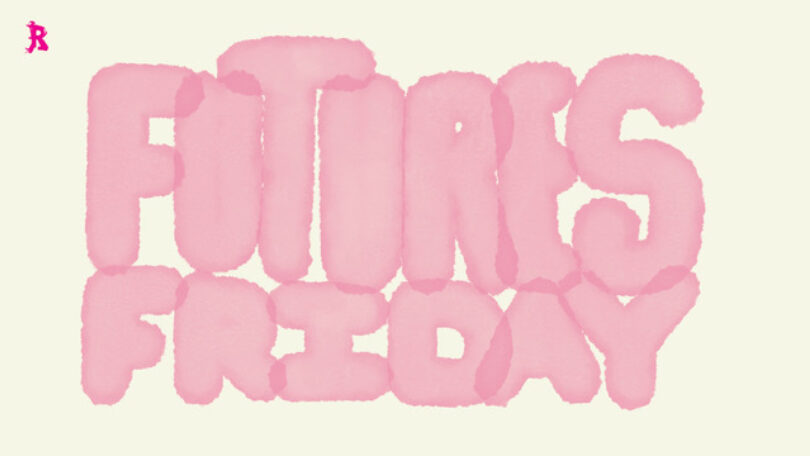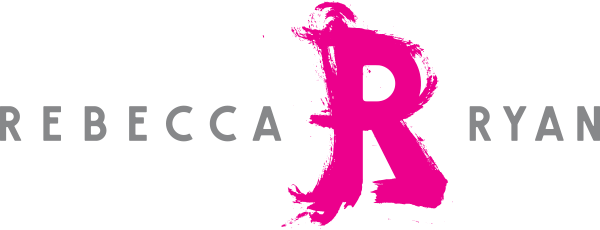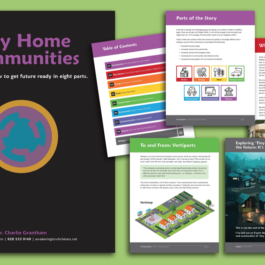What are the top 10 trends for the next ten years? Download the report here.

How
might we go beyond “back to normal” after this pandemic? In this post
we share ideas inspired by Rebecca’s conversation with Dr. Peter Bishop
and a community of over 130 participants to discuss brighter futures (video). Dr. Bishop is founder and Executive Director of Teach the Future.
Previously he led the University of Houston Master’s in Foresight
program for 30 years. In addition to being Rebecca’s teacher, he has
also served as faculty member at Futurist Camp.
Peter: Let’s set the stage. Disruption is a technical term in the futures field. It’s a sudden change that has the potential to, and often does, have enormous consequences. The impact is often only visible in hindsight. In contrast, trends also create change but they are slower and take place over long periods of time. In the long run, trends can be as significant as disruptions. Disruptions since the 1970s include the Vietnam War in the US, the Arab oil embargo, Watergate, hyperinflation, and other developments — all the way through the fall of the Soviet Union, emergence of the Internet, various wars, 9/11 attacks, and the 2007–09 Great Recession. The current pandemic joins that list.
Disruption is a sudden change that has the potential to affect enormous consequences
The question is, will the coronavirus pandemic even make a difference? Will we just “snap back” to the way things were before, or will we emerge as something different? Not every disruption, in fact, makes a difference. The Great Recession, for example, was such a disruption. Banks were bailed out, most people went back to normal, and we now have a financial system that’s as big as what it was before the recession, if not bigger. In that sense, nothing has changed. A lot did in fact change for the population; people lost their homes, took to the streets, and more. That aside, many things are more similar than different to what they were before that recession. In contrast, the emergence of the Internet in the 1990s was a disruption that did make a difference.
If this pandemic does indeed make a difference, we might see a shift in our attitude toward public health and how much time, money, talent, and attention we are willing to spend on issues that have low probability but high impact. Will people with public resources invest more to protect our communities against an event which frankly is unlikely to happen? Will they have enduring public support for such investments? Preparing for these types of events can be a tough sell, if you frame it as taking away resources from the present, present needs, constituents, problems, initiatives, and goals. The key is to flip from Or to And. Show how investments serve the present and the future.
Rebecca: Putting some resources aside for improbable but high impact events is like buying car or property insurance. After disruptions, is there generally more interest in things that will “insure” an organization or community for the future?
Peter: It’s possible, in the form of nurturing resilience. That’s what you can do if you cannot prevent or adequately prepare for all of the contingencies for the future. Resilience is rooted in our ability to learn and readiness to change. Scenario planning nurtures resilience, because it helps us imagine ourselves in alternate universes, learn from them, and use them to create robust contingency plans. (Related blog post: Scenario planning for anxious times.) Futurist camp, for example, is producing a cadre of people whose thinking is more resilient, mentally and cognitively and emotionally, and who can therefore be more agile and strategic action takers.
Scenario planning nurtures resilience.
Rebecca: How we make sense of our situation shapes our ability to explore our options, strategize, and act. What are the signals that people should be looking for now? Who should we be talking to? What should we be thinking about, so that when we come out of this quarantine, we’re better equipped for recovery?
Peter: Look for signals and talk to people that support ideas and aspirations for creating a better future. For example, BrightSpots is a website to help people look for positive signs of change during the pandemic. When disruptions happen, existing structures become open to challenge. We can begin to move in directions that would be unheard of three or six months ago. (Related blog post: Things that were unthinkable are now possible: the Overton Window.) But this window isn’t forever. Structures will form up again. The new era will have as many obstacles to change as the previous ones.
This is the time when the unfreezing is going on, when the destructive part of creative destruction is happening and we need to add the creative part to that. Each person and organization has to commit to something that will create a better world. Look in the mirror and ask, what am I going to be doing differently from now on? What am I committing to? What do I want to lead? What single most important thing do I want to come out of this with? How am I going to be more resilient and futures-oriented because of this experience? How can I enroll, encourage, and support others in being this way going forward? Articulate your aspirations and get ready for the time when the “emergency mode” stops being all-consuming. Then it is time to strike, to make proposals, move, and be bold — creating change rather than solely reacting to it. [For this, we highly recommend Strategic Doing, a collaborative and action-oriented approach that works well with Strategic Foresight.]
Rebecca: When is the right time for changing one’s plans or strategies?
Peter: We can time change through discussion, if not an argument about fundamental change. There are two questions that always get people upset and yet engaged in change: (1) how much are we really going to have to change to adapt to this new world that comes about, and (2) how fast? Some people will say we can snap back, go right back to where we were before, everything will be fine. They’re wrong. Others basically say, let’s blow up the whole system and start over. They’re wrong, too. Getting them off those opposite poles is the first task, in order to have a meaningful and useful discussion. It’s best if you have both of those kinds of people plus people in the middle involved in the discussion to improve decision-making.
“How much?” and “How fast?” are critical questions
Rebecca: How do you think we’ll be relating to each other in the future?
Peter: It depends on the dominant narrative that we establish. For example, as far as I know (as of early April 2020) hardly anybody is enforcing stay-at-home orders. They are primarily implemented on a voluntary basis. When we come out of it, we will reflect on that, that we did this together. We didn’t shelter in place only for ourselves. We did it because we participate in a community. If such a narrative prevails, this would be a tremendous move forward, an aspirational outcome. We have done it in the past with the 9/11 attacks, wars, and hurricanes. People come together after such events. But after a while, that sense of community has gone away again. It is unclear whether this time, the sense of community will be permanent or not.
Rebecca: Narrative is key in the Three Horizons Model of innovation. Research shows that people who can frame the narrative for the 3rd horizon, the people who start to own that narrative, begin to win. It becomes the new normal that society ends up moving toward. Is this pandemic a moment for us to be in the second, messy horizon and we have to start inventing that 3rd horizon narrative?
Peter: I suggest thinking of it in terms of mindsets and leadership styles assigned to each of these horizons by Dr. Andy Hines at the University of Houston. The first horizon is the present, associated with the managerial mindset, focused on creating efficient, effective systems and working in the system rather than on the system.
The third horizon is the visionary mindset. During normal or equilibrium times, they may be called crazy. But now that existing structures begin to collapse or dissolve, good ideas are welcomed from visionaries. They get shared and are getting more currency in terms of discussion, appreciation, and visibility than they did before.
The second horizon is associated with the entrepreneurial mindset. Entrepreneurs are opportunists found in business, government, and NGOs. They try to take advantage of the moment, asking “Where’s the niche?” or “Where can I move this thing forward?” They’re the ones who build the third horizon, not just talk about it. Working as an entrepreneur is not for the faint of heart. It requires tremendous courage and the process involves lots of failures and mistakes. But in a wobbly way they’re moving us from the first to the third horizon.
All
three horizons are present all the time. Most of the time, the
managerial mindset dominates. But we’re now in a disruptive time, when
people listen more to visionaries and entrepreneurs have more options. If
more of us adopt an entrepreneurial mindset in this pandemic, we can
use this time to advance the values, aspirations that will create a
better world for us, our families, our community.
Will the pandemic change us webinar:
If you enjoyed this post, please subscribe to our newsletter.

Rebecca Ryan, APF
Rebecca Ryan captains the ship. Trained as a futurist and an economist, Rebecca helps clients see what's coming - as a keynote speaker, a Futures Lab facilitator, an author of books, blogs and articles, a client advisor, and the founder of Futurist Camp. Check out her blog or watch her Q&A on how NGC helps organizations prepare for the future using Strategic Foresight. Contact Lisa Loniello for more information.
Yasemin Arikan Promoted to Director of Futures Research
NEXT Generation Consulting (NGC) announced the promotion of Yasemin Arikan to Director of Futures Research. Arikan will lead the company’s efforts to...
Is Your Housing Market Ready for Your Future?
One of the biggest problems facing many cities and towns is inadequate housing. This problem is most acute for seniors, veterans with disabilities, and low-income groups ...
Three Things Martha Stewart Gets Right About Return to Office (RTO)
The original influencer and the person who invented the "Home" retail category, Martha Stewart, became the latest CEO to tell employees to get back to the office five day...







